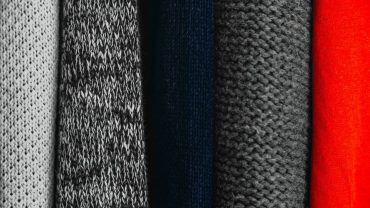Software design and fashion design often are not presented mutually in the same place. But it is happening now. My friend, who previously worked at “TheQuotesTub†as a publisher and researcher let me know it. I came across it funnier and unbelievable initially but believe me; it is going to happen sooner or later. And nobody else is initializing or making it happen but Google. Yes, you heard me right. Google will be going to merge both fashion design and software design together creating a unique equipment or panels that work like smartphone screens. Trends in smart textiles have the potential to revolutionize the style industry, and we might soon be able to download these fashions designing patterns rather than buying them.
What Google Is Trying To Do?
Google is tinkering with the smart textile design, weaving conductive threads into clothes to set-up touch-sensitive sections/ panels that work like smartphone displays. The project is named PROJECT JACKUARD which contains all of the ideas and facts that will make it happen sooner or later.
Project Jacquard was uncovered at Google’s I/O builder conference in SAN FRANCISCO BAY AREA the other day when the technical company also presented detectors that use radar to convert hand activities into adjustments for gadgets.
How Does It Really Work?
Upon touch, the conductive threads send indicators to a pc that translates the motions of an individual into controls. This enables regions of apparel to be utilized as a program for devices like smartphones and tablets. By swiping the part of a textile inlayed with the conductive fibers, users could uncover their phone, answer telephone calls or scroll through articles.
What Material Is It Made From?
The yarn is established by swapping strands of thread with slim metal cables or conductive polymers. According to the united team, their yarn is conductive as well as scalable highly so that it can be used in professional weaving machines around the global world.
The material appears like normal yarn, and can be woven to make a textured surface or included, so it is totally invisible. Different modifications and colors allow designers to test out textures and habits.
How Will It Help Designers?
It was never possible to turn a cloth or piece or cloth material into a sensitive screen that makes you able to do different things which include services, devices and environments. And if a person ever thinks of re-configuring any of these services, devices, and environments, he can do it ease.
Project Jacquard allows programmers and designers to generate linked, touch-sensitive textiles to their own products. Developers can hook up existing software and services to Jacquard-enabled clothes and create new features designed for the platform.
What Is New In Here?
What’s fascinating about this Project Jacquard, where Ivan really has eyesight, he’s the first dude to assault this and says that the clothing itself should be an interactive thing. It must provide us an idea or possibility to connect to devices all around us. That’s the discovery that Project Jacquard is absolutely talking about now. Other than just passive data collection, your clothing can be an opportunity so that you can connect to devices, services, and environments.
